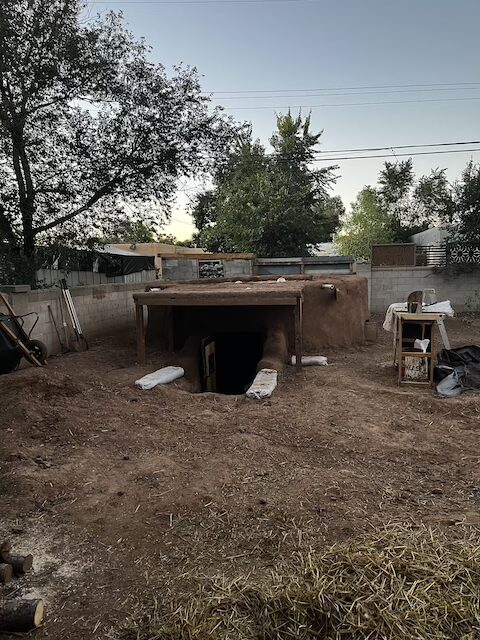© 2025 by Roy Spears, Adobe Masters
Superadobe?
Recently, I received a call email from a customer, Kurt, in Santa Fe, New Mexico inquiring about the Silox Adobe and Rammed Earth Water Repellent. He was in the process of building a studio on his property, constructing it out of superadobe, and wondering if the Silox would help to protect the walls.
(Need adobe repair on your adobe home? Click here or call/text Adobe Masters: 520-331-4004)
Superadobe? I had heard about this in the past and immediately thought it had something to do with earthbag construction. Basically what that means is building a structure out of adobe soil but using bags to fill the adobe with. Sounds crazy, but it’s true.

Here is what Google Gemini returned when I asked, “What is superadobe?”
“SuperAdobe is an earthbag building technique invented by architect Nader Khalili that uses long, continuous sandbags filled with moistened soil, barbed wire for reinforcement between layers, and a coil-like stacking method to build earthquake-resistant, low-cost structures like domes and vaults. The system, which resembles a potter stacking coils of clay, allows for the use of local soil and creates a sustainable building method adaptable for emergency shelters, permanent homes, and even infrastructure.
How SuperAdobe Works
- Filling the Bags: Long, synthetic bags are filled with moistened earth, which can include local soil, clay, and sometimes stabilizers like cement or lime.
- Stacking the Layers: The filled bags are arranged in continuous, coiled layers, similar to how a potter builds a vessel with coils of clay.
- Adding Barbed Wire: Strands of barbed wire are placed between each layer of bags to act as mortar and provide significant tensile strength.
- Tamping: Each layer of bags is tamped to compress the earth, creating a dense, strong wall.
- Shaping and Finishing: The coiled, layered process allows for the creation of arches, domes, and other structural forms. Once complete, a plaster or exterior finish can be applied to protect the structure from erosion.
Key Characteristics
- Sustainable and Eco-Friendly: It uses readily available earth and minimal energy for construction.
- Durable and Safe: SuperAdobe structures are designed to be resistant to earthquakes, fire, flood, and hurricanes.
- Low Cost: The system is simple and uses abundant, inexpensive materials, making it affordable for communities.
- Versatile: It can be used to build everything from small emergency shelters to large homes and other infrastructure like dams and bridges.
Origin and Development
Nader Khalili developed SuperAdobe after years of research, inspired by traditional Iranian earth architecture and adapted with modern global safety requirements. The system was developed to provide safe, strong, and low-cost housing for people around the world, particularly those in areas prone to natural disasters.”
As you can see from the picture above which Kurt sent me, the studio is partially built underground. My immediate reaction was it was similar to a “hobbit hole.” Kurt ordered two five gallons buckets of the “Silox Adobe and Rammed Earth Water Repellent” and is planning on using both of them to protect and preserve his walls.
